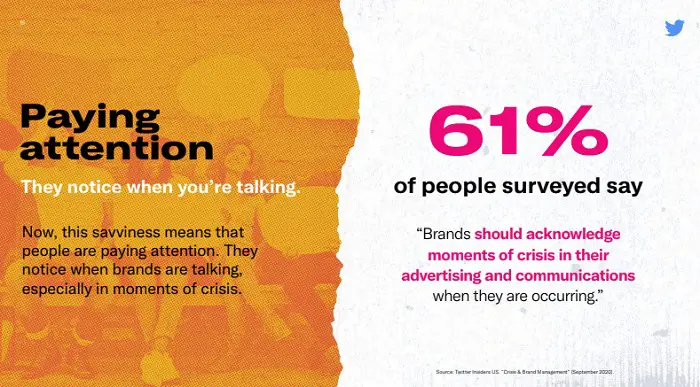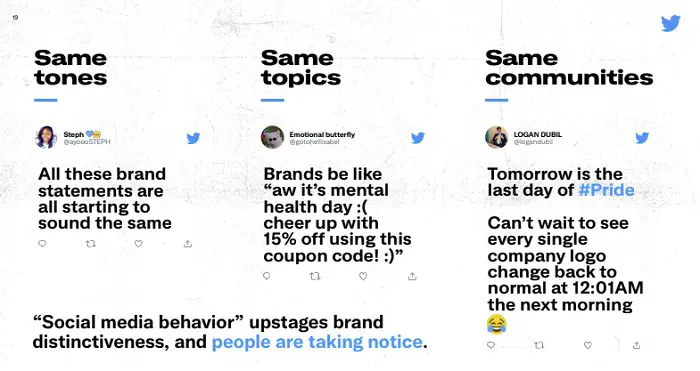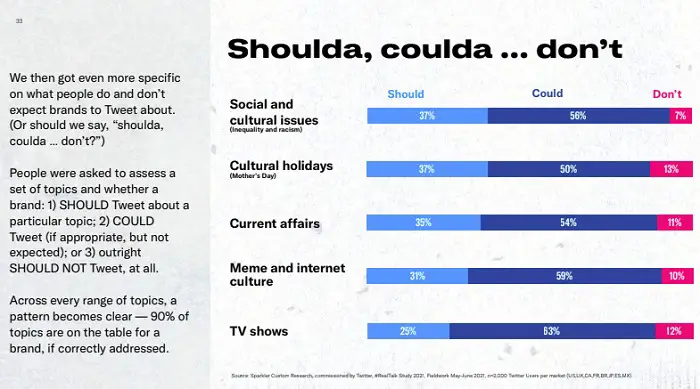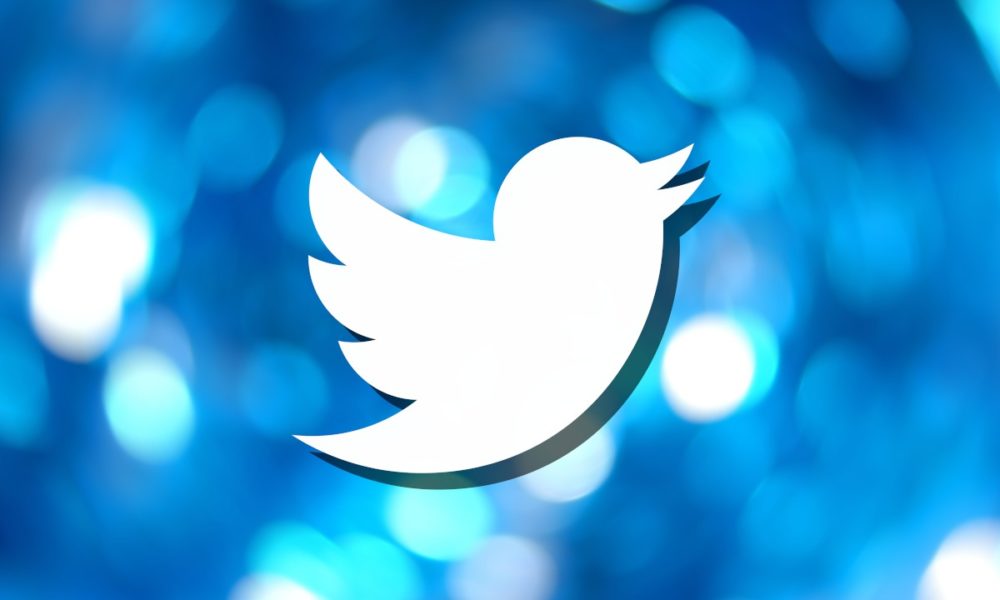Twitter shared a new guide that analyzes how companies may improve their performance on the platform based on changing consumer preferences and demands in the app. This way marketers can boost their success by utilizing advanced methods.
#RealTalk guide from Twitter will help brands understand consumer behaviour
The study called #RealTalk was based on a decade’s worth of brand tweets, as well as user tweets about brands and a ton of consumer questionnaires. It seeks to deliver a genuine picture of what works in today’s Twitter marketing and what consumers both respond to and anticipate.
You may access the entire, 50-page manual here, but we’ll go over some of the highlights in this article.
 First and foremost, Twitter claims that brand conversations on the platform are growing, with more individuals looking to interact with companies inside the app.
First and foremost, Twitter claims that brand conversations on the platform are growing, with more individuals looking to interact with companies inside the app.
Twitter has grown even more essential as a connecting tool in the COVID-19 era and this opens up a lot of possibilities for awareness and connection. This emphasizes the importance of brands ensuring that their message is correct, and as time and circumstances change, so does a brand’s Twitter presence.
Consumers want companies to communicate honestly and genuinely in order to offer timely, relevant information via tweet. The issue, though, is that many brand profiles on Twitter seem to be identical.
For example, when a tweet goes viral, everyone copies the same strategy, and everything begins to seem similar.
 According to Twitter, brands must evolve their messaging and ensure that they’re connecting with their audiences based on what’s going on in the world. Twitter also identifies the sorts of events that consumers want to see brands discuss, or not, assisting you in making your decisions.
According to Twitter, brands must evolve their messaging and ensure that they’re connecting with their audiences based on what’s going on in the world. Twitter also identifies the sorts of events that consumers want to see brands discuss, or not, assisting you in making your decisions.
To summarize, no one is interested in a company’s opinion on La Casa de Papel’s new season. The secret to success is to figure out your target audience, and what they wish for. That’s the fundamental message of Twitter’s entire guide, which is that while general advice might be beneficial, you need to stick with your brand messaging and voice in order to succeed.
 Harvard Business Review published an article called Building Your Company’s Vision and it stresses out the importance of “Five Whys.” They are a response used by your organization to a question asked of it. If you’re talking about a business, it should be easy to find examples of how and why they’ve succeeded. Your introduction will go something like this: “We make such-and-such products or offer such-and-such services,” after which you’ll ask, “Why is that significant?” You should give five answers to each response.
Harvard Business Review published an article called Building Your Company’s Vision and it stresses out the importance of “Five Whys.” They are a response used by your organization to a question asked of it. If you’re talking about a business, it should be easy to find examples of how and why they’ve succeeded. Your introduction will go something like this: “We make such-and-such products or offer such-and-such services,” after which you’ll ask, “Why is that significant?” You should give five answers to each response.
You’ll wind up getting closer to genuinely understanding your companies’ real purpose as you go through those answers, which you can then concentrate down to a single statement that unifies your company activities toward that aim.
HBR outlines that:
“The five whys can help companies in any industry frame their work in a more meaningful way. An asphalt and gravel company might begin by saying, We make gravel and asphalt products. After a few whys, it could conclude that making asphalt and gravel is important because the quality of the infrastructure plays a vital role in people’s safety and experience; because driving on a pitted road is annoying and dangerous; because 747s cannot land safely on runways with poor workmanship or inferior concrete; because buildings with substandard weaken with time and crumble in earthquakes. From such introspection may emerge this purpose: To make people’s lives better by improving the quality of man-made structures.”
This is comparable to Twitter’s brand voice notes, going deeper into not simply how you communicate but also why and what you want to convey with each post.





